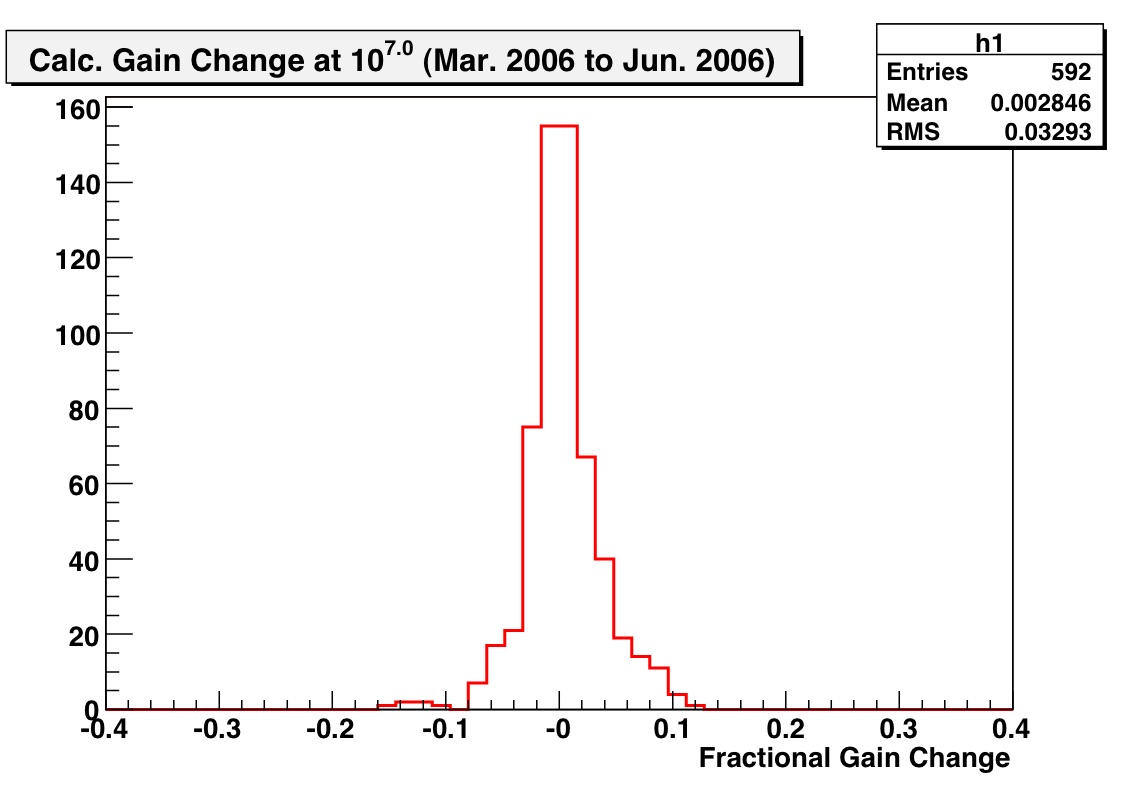
The following plots show the calculated gain change in all in-ice and IceTop DOMs from March to June 2006 as calculated by DOM-Cal, at three different gains: 5E4 (IceTop low gain), 5E6 (IceTop high gain), and 1E7 (in-ice gain). While this technique can detect physical gain changes in a DOM (such as Yurei (29-18)), it is also an estimate of the error on the gain measurement performed by DOM-Cal.
The fractional gain difference is computed using the original (March) high voltage setting, but the new log(gain) vs. log(HV) fit, that is:
(new_gain(old HV) - old_gain(old HV)) / old_gain(old HV)
The RMS at 1E7 of the calculated gain change is quite small (3%), and for 5E6, it grows only to 4%. However, the IceTop low gain setting (5E4) is outside of the calibration range of DOM-Cal, and one can see that the error due to the extrapolation is more significant: the RMS is 11% (with outliers at +/-40%).


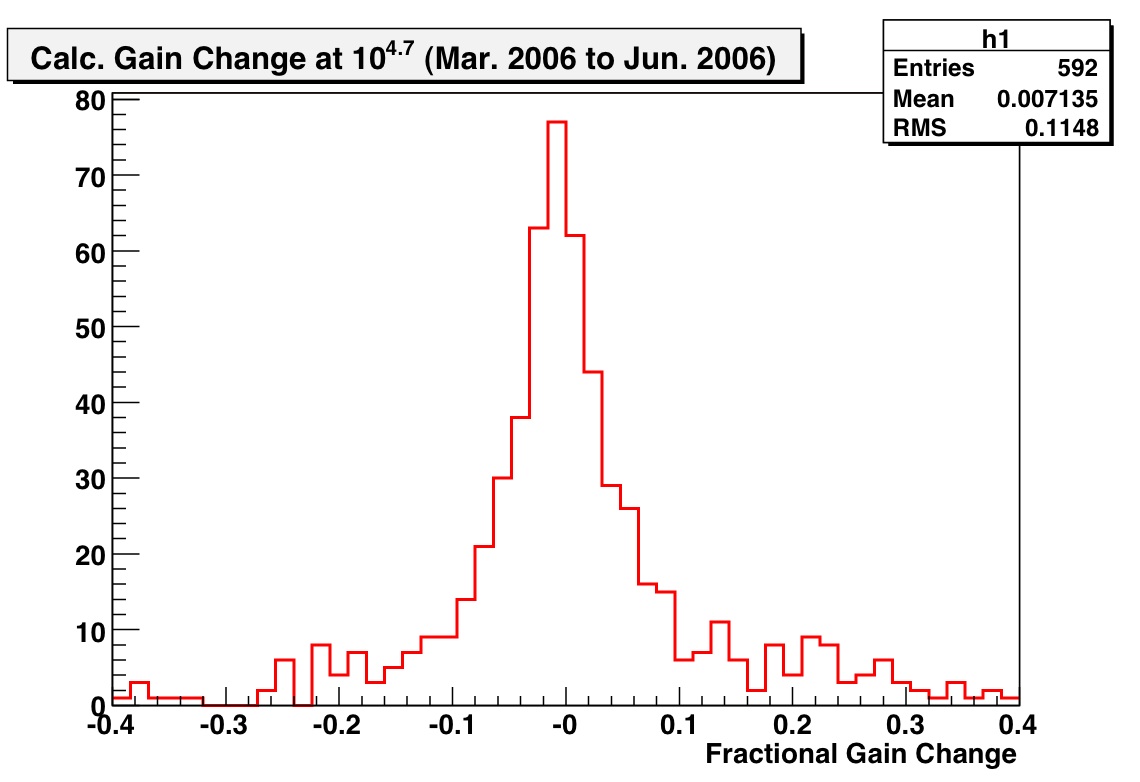
The following plot shows the correlation between the calculated gain change from the March to June run vs the June to July run, at 1E7. The only real outlier is Yurei (29-18), known to have a gain that is degrading over time.
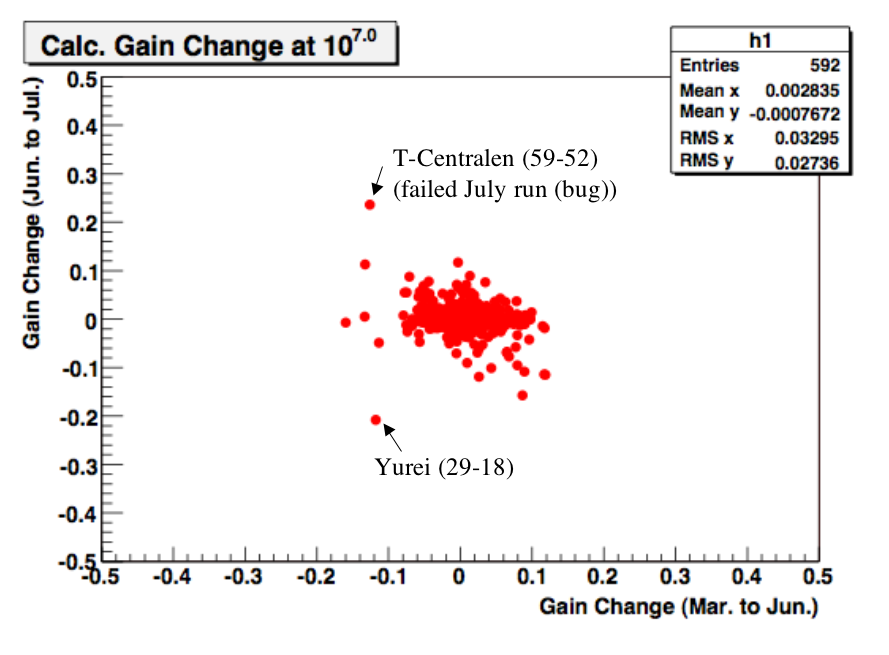
The following plot shows differences in HV and 1e7 gain over a 1 year period for IC22 (domcal runs in May 2007 and April 2008). The gains are stable and the RMS of the distribution is still very small (under 2% fractional change in gain). Large outliers are tracked via the domcal vetting procedure and are listed on the problem DOMs wiki.
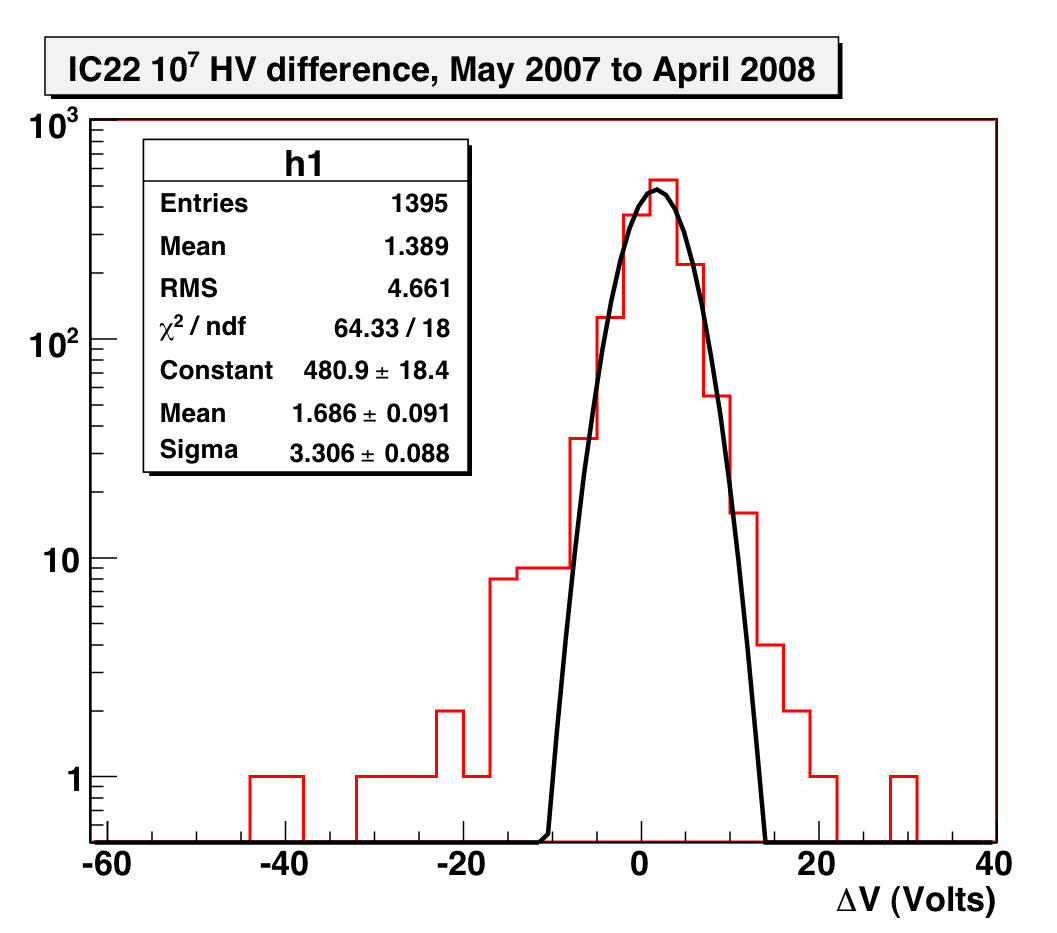 |
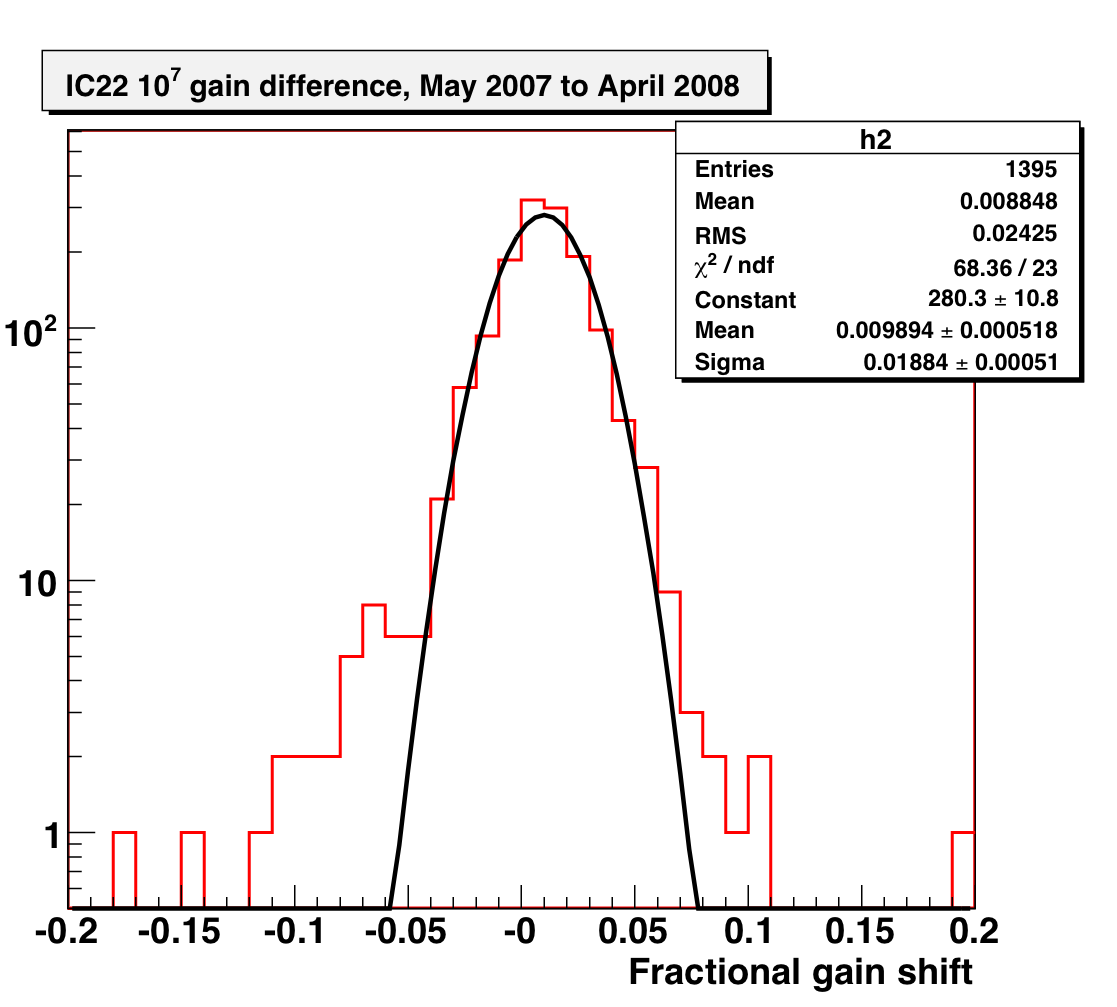 |